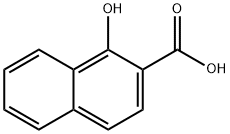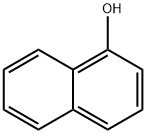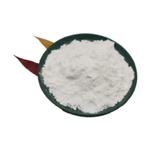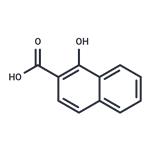Chemical Properties
beige to brown-grey powder. 1-Hydroxy-2-naphthoic acid [86-48-6],
C11H8O3, Mr 188.17, mp 200℃, is only sparingly soluble in hot water but readily soluble in
alkali and ethanol. It couples with diazo compounds in the 4-position and, with excess, in the
4,7-positions. It is sulfonated by oleum to give
the 4-sulfonic and then the 4,7-disulfonic acids.
Halogenation occurs in the 4-position, and nitrosation gives 2-nitroso-1-naphthol.
Uses
Metabolite from phenanthrene degradation. 1-Hydroxy-2-naphthoic acid is used as an intermediate for azo and triphenylmethane dyes and, more recently, for color-film dyes.
Uses
It is an important raw material and intermediate used in Organic Synthesis, Pharmaceuticals, Agrochemicals and Dyestuff.
Definition
ChEBI: 1-hydroxy-2-naphthoic acid is a naphthoic acid with the carboxy group at position 2 and carrying a hydroxy substituent at the 1-position. It is a xenobiotic metabolite produced by the biodegradation of phenanthrene by microorganisms. It has a role as a bacterial xenobiotic metabolite and a fungal xenobiotic metabolite. It is a naphthoic acid, a member of naphthols and a hydroxy monocarboxylic acid. It is functionally related to a 2-naphthoic acid. It is a conjugate acid of a 1-hydroxy-2-naphthoate.
Preparation
Treatment of the dried sodium salt of 1-naphthol with carbon dioxide at 135℃ under pressure gives an 80 % yield of product.
General Description
1-Hydroxy-2-naphthoic acid is produced by the transformation of phenanthrene by NCIB 9816 clones.
Purification Methods
Successively crystallise the acid from EtOH/water, diethyl ether and acetonitrile, with filtration through a column of charcoal and Celite. [Tong & Glesmann J Am Chem Soc 79 583 1957, Beilstein 10 H 331, 10 IV 1194.]




